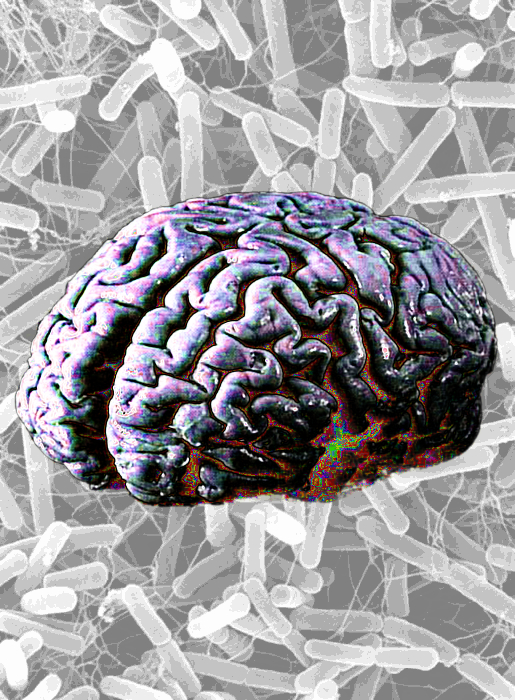Nobel nods to mind-bending findings
by Tim Hall, CareerSpot Editor
This year’s Nobel Prizes honour discoveries that unwind our notion of truth, our understanding of ourselves and the human story, the complexities of cells and the very basics of the universe.
Each year, a request in the will of Swedish chemist, engineer, and industrialist Alfred Nobel sees prizes awarded to “those who, during the preceding year, have conferred the greatest benefit to humankind” by a selection panel from the Royal Swedish Academy of Sciences.
PEACE - The Nobel Prize for Peace is often the most discussed of the annual awards - especially when it is given to controversial recipients. Pointedly, the 2022 Peace Prize went to a trio of anti-war leaders - Ales Bialiatski, Memorial and the Center for Civil Liberties, from Belarus, Russia and Ukraine.
Mr Bialiatski is a lifelong promoter of democracy and peaceful development in Belarus who is considered a pillar of the human rights movement in Eastern Europe. He is also in prison. He was arrested in July 2021 by Belarusian police and charged with tax evasion. He remains in the country’s notorious Prison № 8 - a place of confinement for many political prisoners - and is yet to face trial.
Memorial is the largest human rights organisation in Russia. It runs a centre of documentation on victims of the Stalinist era, and has compiled and systematised information on political oppression and human rights violations by Russian and pro-Russian forces.
Since 2007, the Center for Civil Liberties has sought to advance human rights and democracy in Ukraine, pressuring the authorities to make Ukraine a full-fledged democracy and develop it into a state governed by rule of law. Since Russia’s invasion of Ukraine in February 2022, the Center for Civil Liberties has engaged in efforts to identify and document Russian war crimes against the Ukrainian civilian population.
LITERATURE - The 2022 literature prize was given to French writer Annie Ernaux, whose work is known to examine the strong disparities in life, especially regarding gender, language and class.
The Nobel Committee awarded her Nobel Prize in Literature “for the courage and clinical acuity with which she uncovers the roots, estrangements and collective restraints of personal memory”. In congratulating her, French President Emmanuel Macron said that Ms Ernaux was the voice “of the freedom of women and of the forgotten”.
 ECONOMICS - One of the least attention-grabbing of the annual awards is the Nobel Prize in Economics.
ECONOMICS - One of the least attention-grabbing of the annual awards is the Nobel Prize in Economics.
The prize is not one of the five established by Alfred Nobel's will in 1895, but instead was established in 1968 by an endowment in perpetuity from Sweden's central bank, Sveriges Riksbank. It is a controversial award, especially to Peter Nobel, a great-grandnephew of Alfred Nobel’s brother Ludvig.
Peter Nobel has stated that “[Alfred] Nobel despised people who cared more about profits than society's well-being”, and that “there is nothing to indicate that he would have wanted such a prize”. He says the award is given prestige only by association with the original Nobel prizes, and is “a PR coup by economists to improve their reputation”.
Possibly the greatest criticism of the economic prize comes from its 1974 recipient, Friedrich Hayek.
Dr Hayek stated at his own award’s dinner that had he been consulted on the establishment of a Nobel Prize in economics, he would “have decidedly advised against it”, primarily because; “The Nobel Prize confers on an individual an authority which in economics no man ought to possess.... This does not matter in the natural sciences. Here the influence exercised by an individual is chiefly an influence on his fellow experts; and they will soon cut him down to size if he exceeds his competence. But the influence of the economist that mainly matters is an influence over laymen: politicians, journalists, civil servants and the public generally,” he said.
The 2022 prize was awarded jointly to Ben S Bernanke, Douglas W Diamond and Philip H Dybvig “for research on banks and financial crises”.
Diamond and Dybvig developed theories in the 1980s to show how banks perform two key functions - allowing savers instant access to their money, while ensuring businesses and homeowners know they will not be forced to repay their loans prematurely.
They also showed that these two activities make banks vulnerable to rumours about their imminent collapse, which can become a self-fulfilling prophecy if a large number of savers simultaneously run to the bank to withdraw their money. Dr Bernanke’s work followed along that line, showing how bank runs were a decisive factor in the Great Depression of the 1930s becoming so deep and prolonged.
Together, their work has seen governments provide deposit insurance and act as a lender of last resort to banks to help avoid both serious crises and expensive bailouts.
The next three Nobel Prizes went to pure, high-quality, cutting-edge nerd stuff.
 PHYSICS - The 2002 Nobel Prize in Physics was awarded jointly to Alain Aspect, John F Clauser and Anton Zeilinger “for experiments with entangled photons, establishing the violation of Bell inequalities and pioneering quantum information science”.
PHYSICS - The 2002 Nobel Prize in Physics was awarded jointly to Alain Aspect, John F Clauser and Anton Zeilinger “for experiments with entangled photons, establishing the violation of Bell inequalities and pioneering quantum information science”.
Together, the three researchers have helped make it clear what ‘quantum mechanics’ really means; helping to add definition to the weird and seemingly magical world of quantum physics, where the standard rules as we know them do not apply.
All three have conducted groundbreaking experiments using entangled quantum states, where two particles behave like a single unit even when they are separated by the furthest distance.
In the 1960s, physicist John Stewart Bell responded to a thought experiment put forth by Albert Einstein decades earlier, in which he questioned how two entangled particles can reflect each other’s state instantaneously.
When an entangled particle is measured, the quantum state of its entangled counterpart switches to a new state depending upon that result.
Physicists wanted to know whether the measurement of the first particle somehow interacted with the second particle at faster than the speed of light, or if the entangled particles had some unmeasured property that pre-determined their final quantum states before they were separated.
‘Bell’s inequalities’ relates to the idea that uncertainties in quantum theory’s predictions must be due to ignorance or unknowability of these properties, or what Dr Bell called “hidden variables”.
Nobel laureate John Clauser later developed Dr Bell’s ideas into a practical experiment. He took measurements that supported quantum mechanics by clearly violating a Bell inequality. This means that quantum mechanics cannot be replaced by a theory that uses hidden variables.
Alain Aspect took this work further, closing a loophole in Dr Clauser’s work. Dr Aspect was able to switch the measurement settings after an entangled pair had left its source, so the setting that existed when they were emitted could not affect the result.
Using refined tools and long series of experiments, Anton Zeilinger started to use entangled quantum states, and has demonstrated a phenomenon called quantum teleportation, which makes it possible to move a quantum state from one particle to one at a distance.
Together, the three have demonstrated the potential to investigate and control particles that are in entangled states. Their work is at the heart of ongoing efforts to utilise the special properties of quantum particle systems to construct quantum computers, improve measurements, build quantum networks and establish secure quantum encrypted communication.
“It has become increasingly clear that a new kind of quantum technology is emerging. We can see that the laureates’ work with entangled states is of great importance, even beyond the fundamental questions about the interpretation of quantum mechanics,” says Anders Irbäck, Chair of the Nobel Committee for Physics.
CHEMISTRY - The Nobel Prize in Chemistry 2022 was awarded jointly to Carolyn R Bertozzi, Morten Meldal and K Barry Sharpless “for the development of click chemistry and bioorthogonal chemistry”.
The work of Barry Sharpless and Morten Meldal has laid the foundation for a functional form of chemistry – click chemistry – in which molecular building blocks snap together quickly and efficiently. Carolyn Bertozzi has taken click chemistry to a new dimension and started utilising it in living organisms.
Dr Sharpless began arguing for a new and minimalistic approach in chemistry around the turn of this century.
He called for chemists to stop imitating natural molecules, which often resulted in carbon-based molecular constructions that were very difficult to master, and instead start with smaller molecules that could then be linked (or ‘clicked’) together using bridges of nitrogen atoms or oxygen atoms, which are easier to control.
His work is based on the premise that if chemists choose simple reactions - where there is a strong intrinsic drive for molecules to bond together - they avoid many of the unhelpful side reactions that come with attempting to imitate complex natural molecules.
Dr Sharpless called this robust method for building molecules ‘click chemistry’, saying that even if click chemistry cannot provide exact copies of natural molecules, it will be possible to find molecules that fulfil the same functions.
Dr Meldal began his award-winning work while developing methods for finding potential pharmaceutical substances using enormous molecular libraries, which could include hundreds of thousands of different substances. His experiments led to the discovery of reactions that can be used to bond together numerous different molecules.
Coincidentally, Dr Meldal and Dr Sharpless published separate papers in the same year about a copper catalysed reaction between azides and alkynes that was described as an “ideal” click reaction.
Click chemistry has come a long way in the last two decades, and is now used for reactions to facilitate the production of new materials that are fit for purpose.
If a manufacturer adds a clickable azide to a plastic or fibre, changing the material at a later stage is straightforward; it is possible to click in substances that conduct electricity, capture sunlight, are antibacterial, protect from ultraviolet radiation or have other desirable properties.
Softeners can also be clicked into plastics, so they do not leak out later. In pharmaceutical research, click chemistry is used to produce and optimise substances that can potentially become pharmaceuticals.
For her part, Dr Bertozzi has continued refining click reactions that work in cell environments, and has used these reactions to explore how biomolecules interact in cells and to study disease processes.
Her studies have led to insight about how some natural molecules appear to protect tumours from the body’s immune system, and how to block this protective mechanism.
Many researchers have used her work to develop clickable antibodies that target a range of tumours. Once the antibodies attach to the tumour, a second molecule that clicks to the antibody is injected.
Future developments are expected to continue using the findings of the three laureates to enable better cancer treatments, among many other applications.
 MEDICINE - The Nobel Prize in Physiology or Medicine 2022 was awarded to Svante Pääbo “for his discoveries concerning the genomes of extinct hominins and human evolution”
MEDICINE - The Nobel Prize in Physiology or Medicine 2022 was awarded to Svante Pääbo “for his discoveries concerning the genomes of extinct hominins and human evolution”
Dr Pääbo’s research has accomplished something seemingly impossible: sequencing the genome of the Neanderthal, an extinct relative of present-day humans. He also made the sensational discovery of a previously unknown hominin, Denisova.
Importantly, Dr Pääbo also found that gene transfer had occurred from these now extinct hominins to Homo sapiens following the migration out of Africa around 70,000 years ago.
This ancient flow of genes to present-day humans has physiological relevance today, for example affecting how the modern immune system reacts to infections.
Dr Pääbo’s seminal research gave rise to an entirely new scientific discipline; paleogenomics. By revealing genetic differences that distinguish all living humans from extinct hominins, his discoveries provide the basis for exploring what makes Homo sapiens unique.
Over the course of decades, he worked across various institutions to steadily improve the methods to isolate and analyse DNA from archaic bone remains.
His research team exploited new technical developments, which made sequencing of DNA highly efficient and engaged several critical collaborators with expertise on population genetics and advanced sequence analyses.
His efforts were successful. Dr Pääbo accomplished the seemingly impossible and published the first Neanderthal genome sequence in 2010. Comparative analyses demonstrated that the most recent common ancestor of Neanderthals and Homo sapiens lived around 800,000 years ago.
In 2008, a 40,000-year-old fragment from a finger bone was discovered in the Denisova cave in the southern part of Siberia.
The bone contained exceptionally well-preserved DNA, which Dr Pääbo’s team sequenced.
The results caused a sensation: the DNA sequence was unique when compared to all known sequences from Neanderthals and present-day humans. Dr Pääbo had discovered a previously unknown hominin, which was given the name Denisova.
Comparisons with sequences from contemporary humans from different parts of the world showed that gene flow had also occurred between Denisova and Homo sapiens. This relationship was first seen in populations in Melanesia and other parts of South East Asia, where individuals carry up to 6 per cent Denisova DNA.
Altogether, Dr Pääbo’s discoveries have generated new understanding of mankind’s evolutionary history. Intense ongoing research focuses on analysing the functional implications of these genetic differences, with the ultimate goal of explaining what makes us uniquely human.








 Create PDF
Create PDF Print
Print Email to friend
Email to friend